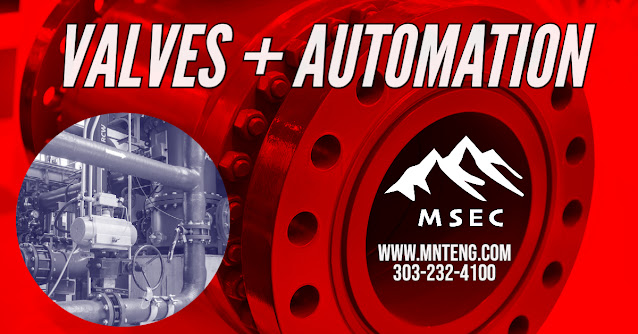
Industrial valves manage the flow through pipelines and processing equipment. The valve functions as a faucet, regulating the flow through the pipe by opening and closing it. Automating a valve involves installing some form of actuator and control system. Actuator power occurs by hand, electricity, pneumatics, or hydraulics. Valve automation is helpful for flow management in pipe systems that need precision control or fail-safe emergency cutoff. Improved flow control and throughput through automated valves help cost savings by reducing product waste. Automated valves have application in many industrial settings, including municipal water distribution, wastewater treatment plants, power plants, mines, chemical plants, food and beverage processing, refineries, and pipelines.
Actuated valves support plant safety by allowing for consistent operating levels and assuring safe operation in situations where high temperatures, high pressure, harmful gases or vapors, flammable materials, or other circumstances might lead to catastrophic failures. Automatic valve actuators revert to their fail-safe settings in an emergency, preventing industrial accidents, environmental spills, equipment or building damage, and other disastrous results. Automation also provides remote access to valves that are difficult or impossible to reach, providing a means to return them to normal valve operations or a safe position.
Handwheels, levers, and gears operators are examples of manual valve actuators. These are less expensive and more straightforward to implement than other options, but a hand wheel, a lever and a gear require a human to open and close the valve, which isn’t always practicable or desired. Larger valves need a great deal of force to operate manually, and some are in remote or hazardous areas. It might also pose a safety risk if the valve has to be closed fast.
The power for pneumatic valve actuators comes from air pressure or another gas. The two most common types of pneumatic actuators are scotch yoke and rack and pinion designs. Pneumatic actuators have advantages because they require minimal maintenance and are well suited to temperature fluctuations.
Like pneumatic actuators, hydraulic actuators convert fluid pressure into motion. Hydraulic fluids provide the motive power in this type of actuator. They provide torque more significant than those produced by a pneumatic actuator of the same size. In some instances, the process fluid may supply the hydraulic pressure.
Electric actuators operate valves using an electric motor and gearing to produce torque. An electric actuator is quiet and energy-efficient. Because of their gearing, opening and closing times of electric actuators are relatively slow. As a result, they are not best suited for high-speed position-changing applications.
Intelligent and digital valve positioners now contain a digital communication protocol and additional features. Device diagnostic advancements are significant because they allow the transition from traditional corrective and planned maintenance to predictive maintenance. Valve positioner diagnostics are increasingly advanced, enabling valve testing to determine if maintenance or replacement is required.
Valve actuators are critical components in process automation. Valve automation allows businesses to continually improve process efficiency and product quality while protecting people, facilities, and the environment. The latest generation of valve automation technology enables industrial firms to conduct on-site diagnostics and better understand overall valve performance at a reduced cost.
For optimum outcomes, automated valve applications must involve a knowledgeable and experienced valve specialist who can advise on the appropriate technology and critical installation practices.
See our valve products, including butterfly valve types, ball valve types and more!